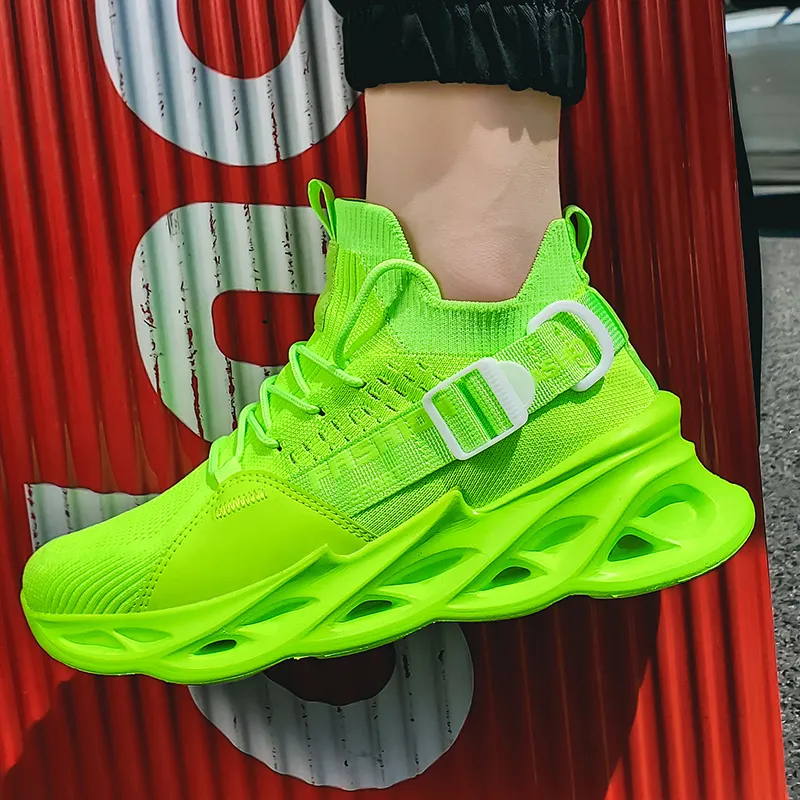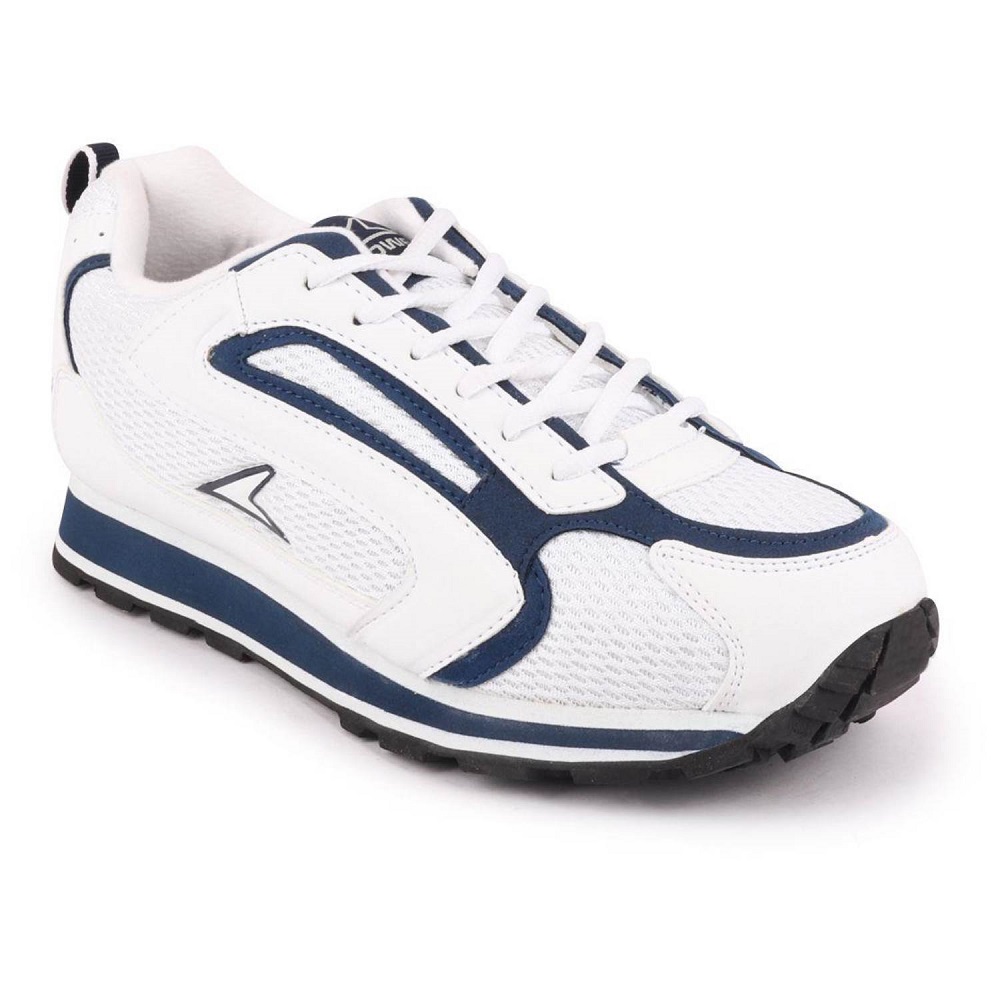Key Features to Consider When Choosing Sports Running Shoes
Selecting the right sports running shoes is vital for comfort and performance. Let’s explore the key features that determine a good pair.
Cushioning and Support
Look for shoes with adequate cushioning to absorb impact. This protects your joints during runs. The right amount of support depends on your gait. Stability shoes offer control for pronation, while neutral shoes suit those with a natural stride.
Breathability and Material
Choose shoes with breathable materials like mesh to keep feet cool. Good airflow prevents blisters and athlete’s foot. The material should also be durable to withstand miles of running.
Fit and Size Considerations
Ensure a snug fit to avoid slipping inside the shoe. There should be a thumb’s width of space in the toe box. Remember, feet swell during runs, so try on shoes in the afternoon when your feet are larger.
Types of Sports Running Shoes
Choosing the right type of sports running shoes can significantly affect your running experience. Depending on where and how you plan to run, you can opt for trail running shoes or road running shoes, each designed to offer optimal performance in specific environments.
Trail vs Road Running Shoes
Trail running shoes are for off-road routes. They have better traction and durability to tackle rough terrain. Thick soles and protective toe caps are common features. They often have a more aggressive tread pattern to grip dirt paths and rocky surfaces. In contrast, road running shoes are lighter and more flexible, ideal for paved surfaces. They focus on cushioning and a smoother tread to distribute impact evenly when running on harder surfaces.
Faith in your footing is crucial when switching between asphalt and unpaved paths. When selecting sports running shoes, consider the terrain you’ll be frequenting to make an informed decision.
Shoes for Distance Running vs Sprinting
Sports running shoes also vary based on the type of running you do. Distance running shoes prioritize endurance and comfort over long periods. They usually have more cushioning to absorb the repetitive impact of each stride. This helps in reducing fatigue and increasing comfort during long runs.
Sprinting shoes, on the other hand, are built for speed. They are generally more lightweight to promote fast foot turnover. They might have a firmer sole to provide better energy return with each push-off. The difference between these shoes can be subtle but significant in optimizing your performance for either sprinting or endurance running.
Overall, the right sports running shoes should align with your terrain and type of running. Make sure to try on different pairs to see which ones suit your needs best.

Importance of Proper Footwear in Running Performance
Ensuring you have the right sports running shoes is key to maximizing running performance. The right shoes not only provide comfort but also influence your running efficiency and play a vital role in injury prevention. Let’s delve into the critical impacts of proper footwear on your running capabilities.
Impact on Speed and Efficiency
Choosing sports running shoes that fit well and are designed for your running style can significantly impact your speed and efficiency. A well-fitted shoe reduces energy expenditure by minimizing internal foot movement, allowing for a smoother and more efficient run. The traction of the shoe also plays a role by providing the necessary grip that helps in accelerating and maintaining speed without slipping. Additionally, the weight of the shoe affects performance; lighter shoes encourage faster foot turnover, which is crucial in sprinting and long-distance running.
Prevention of Injuries
Proper footwear is paramount in preventing running-related injuries. Sports running shoes that offer adequate cushioning can absorb the shock during impact, reducing the strain on joints and muscles. This cushioning minimizes the risk of injuries such as shin splints, knee pain, and stress fractures. Furthermore, shoes designed for specific types of running, like stability shoes for overpronators, can help in correcting gait abnormalities that often lead to injuries. Ensuring your running shoes have the right support system not only extends the life of your shoes but also protects your body from long-term damage.
Latest Innovations in Sports Running Shoes Technology
In the world of sports running shoes, innovation never sleeps. Constant advancements in technology ensure that runners have access to the best in comfort, performance, and injury prevention. Here, we will delve into the latest breakthroughs that are changing the game for runners everywhere.
Advances in Cushioning Materials
Cushioning is a key factor for any sports running shoe, impacting comfort and joint health during runs. Recent innovations have seen the development of new foam materials that provide superior energy return while still offering the plush feeling runners love. These advanced foams adapt to an individual’s stride, weight, and speed, giving a tailor-made cushioning experience.
Manufacturers are utilizing materials such as expanded thermoplastic polyurethane (eTPU) and new formulations of ethylene-vinyl acetate (EVA) to create soles that are not just comfortable but also durable. These materials ensure that shoes maintain their supportive qualities over many miles, making them a worthwhile investment for serious runners.
Innovations in Sole Design
The sole of a shoe is where the rubber meets the road, quite literally. Innovations in sole design are focusing on improving traction, flexibility, and longevity. The design now often includes strategic cutouts and dynamic patterns to reduce the shoe’s weight while enhancing flexibility and responsiveness.
Moreover, advancements in tread designs are tailored to specific types of running. For trail running shoes, the focus is on aggressive lugs that provide unparalleled grip on uneven surfaces. Road running shoes, on the other hand, feature more streamlined patterns that maximize contact with flat surfaces for consistent traction.
The integration of propulsion plates is another notable innovation. These rigid yet responsive inserts sit between the midsole and the outsole. They help propel the runner forward, providing an extra push with each toe-off, thus enhancing speed and efficiency.
The landscape of sports running shoes technology is fast evolving, and these cushioning and sole design advancements are just the tip of the iceberg. Runners can look forward to an ever-improving experience with footwear that is smart, supportive, and ahead of the curve.

Choosing the Right Running Shoes for Different Foot Types
Running performance and comfort are heavily influenced by the compatibility of sports running shoes with your foot type. Not all feet are the same; some runners have flat feet, while others have high arches. Each condition requires specific features in running shoes to provide the best support and prevent injuries. Let’s look at suitable options for these different foot types.
Shoes for Flat Feet
Flat feet, or overpronation, can lead to alignment issues and increased risk of injury. If you have flat feet, look for sports running shoes with:
- Stability features, which help control unnecessary side-to-side movement.
- Firm midsoles, which offer arch support to prevent the foot from rolling inward.
- Structured cushioning, which provides a balance between support and comfort to protect the foot.
Shoes designed for flat feet help maintain proper form and reduce the stress on your legs and back during runs.
High Arch Support Options
For runners with high arches, also known as underpronators, the focus should be on finding shoes that:
- Have enhanced cushioning, to absorb the impact that high arches may not naturally provide.
- Feature flexible midsoles, which aid in evening out the pressure distribution across the foot.
- Include soft upper materials, which adapt to the shape of the high arch without causing irritation.
High arch support options in sports running shoes help prevent injuries like plantar fasciitis and stress fractures by ensuring proper foot alignment and pressure distribution.
Selecting the correct sports running shoes tailored to your foot type is not only crucial for comfort but also for your overall running health. Make sure to assess your foot type and try on various options to find the ideal match for your unique stride.

Tips for Maintaining and Extending the Life of Running Shoes
Caring for your sports running shoes can significantly extend their lifespan and performance. Here are essential maintenance tips every runner should know.
Proper Cleaning and Storage
Clean your shoes after each run, especially if they’re dirty. Use a soft brush to remove dirt and debris from the outsole and a damp cloth for the upper. Avoid using harsh detergents as they can damage the materials. Always air dry your shoes away from direct sunlight to prevent the material from degrading. Storing your shoes in a cool, dry place will also help maintain their shape and functionality. Never store your sports running shoes in damp areas or in direct heat, as this can alter the material properties.
When to Replace Your Running Shoes
Monitor your shoe’s condition to determine when to replace them. A typical sports running shoe lasts between 300 to 500 miles, depending on your running style and the shoe’s build quality. Noticeable wear on the sole, discomfort while running, or a lack of cushioning are clear indicators that it’s time for a new pair. Replacing your shoes at the right time can prevent injuries and maintain the efficiency of your runs. Regularly assess your shoes and replace them when necessary to ensure optimal performance and comfort.











